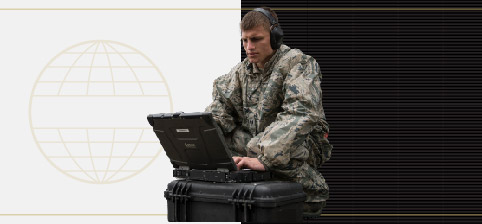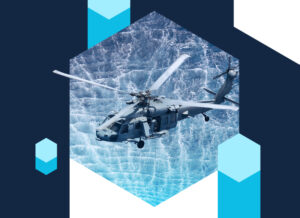This summer, government agencies and IT leaders joined at TechNet Augusta 2022 to explore how new IT products can help the DoD accomplish its upcoming goals. Agencies such as the U.S. Army Cyber Command, Army Cyber Center of Excellence and G6 Offices discussed problem-solving techniques around the military’s current cyber procurement challenges. One of the U.S. Army’s main objectives is to become a data-centric organization. Several Army Program Executive Offices (PEO) are working towards implementing new initiatives that would achieve that goal.
One such office is the Program Executive Office Enterprise Information Systems (PEO-EIS), which manages and provides the information technology network and business systems to the U.S. Army and will focus on breaking down its unified network initiative in three phases:
- Phase 1 will begin from August 2022 and last until 2024. The PEO-EIS will work to synchronize all network modernization plans.
- Phase 2 will span across 2025-2027. The Army Program Executive Office will work to converge its enterprise and tactical networks.
- Phase 3 will take effect in 2028 and onward. This phase will complete the network shift to be fully postured for Multi Domain Operations.
Program Executive Office Command, Control, Communications-Tactical (PEO-C3T) will work to develop, acquire and support the Army’s tactical network. This critical part of modernization plays a vital role in transforming to a data-centric network. The PEO-C3T has four focus areas for its networks:
- Transport agnostic networking
- Create a data-centric environment
- Secure Architecture
- Solidify Cyber and Electromagnetic Activities (CEMA) dominance
PEO-C3T also seeks to improve automated primary, alternative, contingency and emergency communications. Within this desired communications update, there are opportunities to include data-centric technologies such as AI/ML, 5G and long-rage high bandwidth broadband. Emerging technologies such as blockchain may also be helpful when implemented.
The Program Executive Office of Simulation, Training, and Instrumentation (PEO-STRI) oversees the training of the Army members. PEO-STRI and related Program Executive Offices are transitioning to become a more data-centric organization in several ways:
- PEO-STRI aims to create platform development kits that will help the Army get involved with synthetic training environments (STE) and rehearsal simulations for training.
- The PEO-EIS has been heavily involved in improving its data platform VANTAGE to utilize reference architecture and system views to improve their networks.
- PEO-EIS wants assistance from industry experts for metric development for agile software and DevSecOps programs.
- Program Executive Office for Intelligence, Electronic Warfare & Sensors (PEO-IEW&S), the office that proactively communicates with industry partners, has been working on converging sensor data and building adaptable sensors. These sensors would be able to enter an environment without a predetermined understanding of what that environment is going to be. This would expand the network capabilities. PEO-IEW&S is looking to dialogue with industries specializing in adaptable sensors with hopes of working together to provide feedback on rapid fielding initiatives.
The Signal Foundation supports multi-domain operations. Network Enterprise Technology Command (NETCOM), the premier communications organization and information service provider to the Army, has set a foundation for deploying unified networks. This foundation incorporates three tenets:
- Accelerate: Agencies should work to find commercial solutions that are both secure and efficient for classified data and networks.
- Centralize: NETCOM is now in charge of all the army’s organization networks and will work to centrally monitor their status.
- Transform: The army will focus on deploying Army 365 and comply to connect technology across all its networks. Agencies such as Army Cyber Command (ARCYBER) are trying to experiment with how to deliver information operations to commanders and troops on the ground. These efforts can unify the U.S. army and keep units updated.
In combining Army networks, the PEO can ensure that all operations have similar modernization efforts and data objectives.
Lastly, the PEO aims to improve cybersecurity in the Cloud. When introducing new cloud programs into the Army or DoD, there needs to be a division of tasks. Oftentimes, companies have unclear responsibility delineation on who should work to secure their cloud systems. This leads to a lack of standard procedures for agencies’ cloud systems. With a proper division of labor, which should be implemented during the contract phase, agencies can ensure that safety measures are being properly established and tested.
By becoming data-centric, the Army aims to be on a single unified system front that is up to date and secure. Through achieving this goal, the Army can effectively optimize U.S. military operations.
For more information about TechNet Augusta, visit Carahsoft’s website, the trusted Government IT solutions provider.
*The information contained in this blog has been written based off the thought-leadership discussions presented by speakers at TechNet Augusta 2022.*








